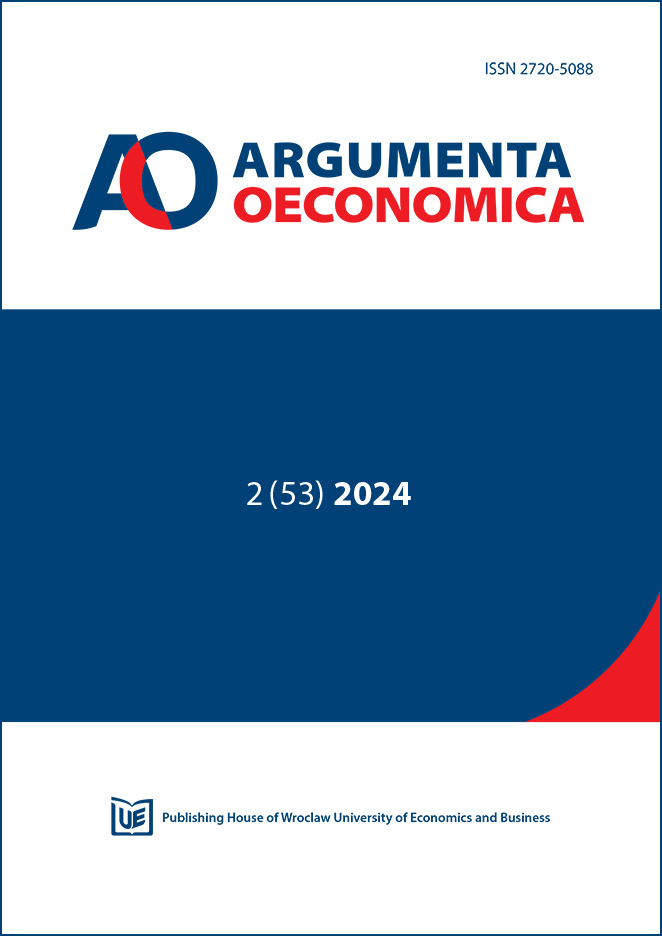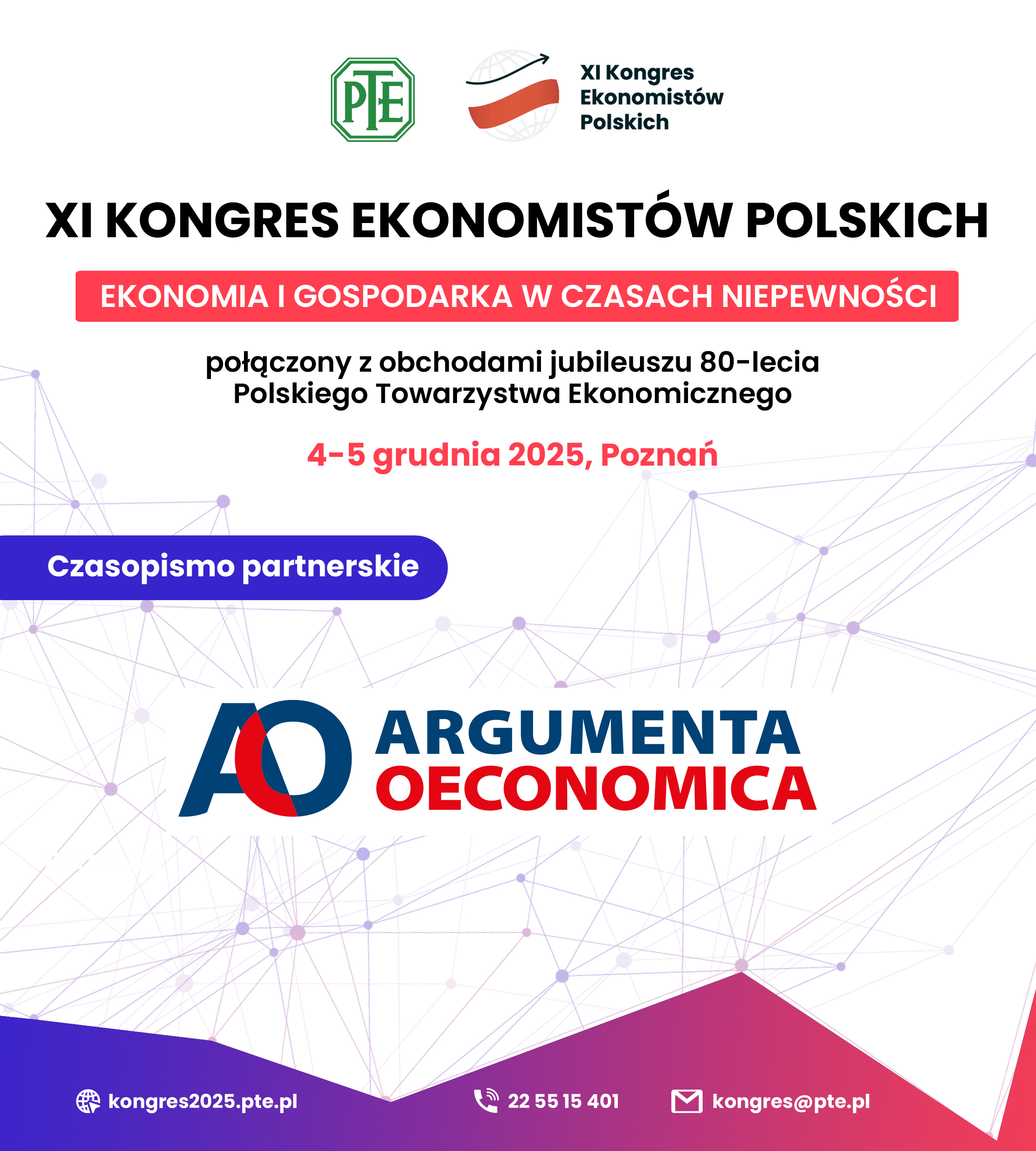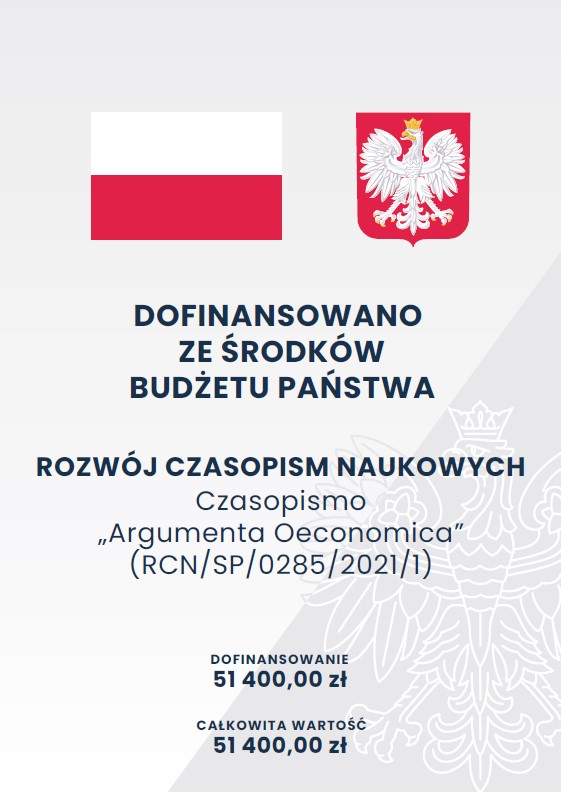Working from home, feeling bad? A panel analysis regarding the absence of work–family conflict, self-efficacy, and HR development practices
Keywords:
HR development practices, mental well-being, gender, self-efficacy, work-family conflict, work from homeAbstract
Purpose: The purpose of this paper is to investigate the determinants of mental well-being among employees working from home. Therefore, the direct effects as well as a three-way interaction effect—of the absence of work–family conflict (WFC), self-efficacy, and HR development practices—are investigated as key drivers of employees’ mental well-being.
Design/methodology/approach: We use a large four-wave employee survey from the Linked Personnel Panel for Germany and employ linear mixed-effect regression analysis to examine the hypothesized relationships.
Findings: Support for the positive direct effects of the absence of WFC on mental well-being among women and men was found. While self-efficacy promoted mental well-being solely among men but not among women, HR development practices were a significant positive predictor of mental well-being among women but not among men. Empirical support for the three-way interaction effect of high self-efficacy and high HR development practices strengthening the corresponding relationship among women and men was found.
Originality: This study contributes to the literature by providing new empirical evidence of panel data regarding the determinants of mental well-being among employees working from home. Additionally, we found a three-way interaction effect that links the absence of WFC, self-efficacy, and HR development practices with employees’ mental well-being. By doing so, we identified one specific resource gain spiral of employees working from home and therefore extend the Conservation of Resources (COR) Theory. Moreover, based on our findings developing a ‘Gender Role–COR Theory’ is suggested to examine the varying impacts of resources on mental well-being among women and men.
Downloads
References
Agrawal, M., & Mahajan, R. (2021). The effect of optimism on the work-family interface and psychological health of Indian police. Policing: An International Journal, 44, 725-740. https://doi.org/10.1108/PIJPSM-10-2020-0161
Aldossari, M., & Chaudhry, S. (2021). Women and burnout in the context of a pandemic. Gender Work Organ, 28, 826-834. https://doi.org/10.1111/gwao.12567
Bakker, A. B., Demerouti, E., & Euwema, M. C. (2005). Job resources buffer the impact of job demands on burnout. Journal of Occupational Health Psychology, 10, 170-180.
Bandura, A., Adams, N. E., & Beyer, J. (1977). Cognitive processes mediating behavioral change. Journal of Personality and Social Psychology, 35, 125-139.
Barbieri, B., Balia, S., Sulis, I., Cois, E., Cabras, C., Atzara, S., & Simone, S. de (2021). Don't call it smart. Frontiers in Psychology, 12, 1-13. https://doi.org/10.3389/fpsyg.2021.741585
Bech, P., Olsen, L. R., Kjoller, M., & Rasmussen, N. K. (2003). Measuring well‐being rather than the absence of distress symptoms. International Journal of Methods in Psychiatric Research, 12, 85-91.
Bellmann, L., & Hübler, O. (2021). Working from home, job satisfaction and work–life balance–robust or heterogeneous links? International Journal of Manpower, 42, 424-441.
Bellmann, L., & Hübler, O. (2022). Personality traits, working conditions and health: An empirical analysis based on the German Linked Personnel Panel, 2013–2017. Revue of Managerial Science, 16, 283-318. https://doi.org/10.1007/s11846-020-00426-9
Bettac, E. L., & Probst, T. M. (2021). Work-family conflict, sleep, and health. International Journal of Manpower, 42, 240-259. https://doi.org/10.1108/IJM-02-2019-0106
Bliese, P. D., Maltarich, M. A., & Hendricks, J. L. (2018). Back to basics with mixed-effects models. Journal of Business and Psychology, 33, 1-23.
Bosle, C., Fischer, J. E., & Herr, R. M. (2021). Creating a measure to operationalize engaged well-being at work. Journal of Occupational Medicine and Toxicology, 16, 9-21. https://doi.org/10.1186/s12995-021-00297-0
Brummelhuis, L. L. ten, & Bakker, A. B. (2012). A resource perspective on the work–home interface. American Psychologist, 67, 545-556.
Carnevale, J. B., & Hatak, I. (2020). Employee adjustment and well-being in the era of COVID-19. Journal of Business Research, 116, 183-187.
Chinomona, R. (2012). The impact of organizational support on work spirituality, organizational citizenship behaviour and job performance. African Journal of Business Management, 6. https://doi.org/10.5897/AJBM11.2286
Chung, G. H., & Pak, J. (2021). Is there internal fit among ability-, motivation-, and opportunity-enhancing HR practices? Evidence from South Korea. Revue of Managerial Science, 15, 2049-2074. https://doi.org/10.1007/s11846-020-00415-y
Cohen, J., Cohen, P., West, S. G., & Aiken, L. S. (2003). Applied Multiple Regression/Correlation Analysis for the Behavioral Sciences, 3rd ed. Lawrence Erlbaum Associates, Inc., Publishers.
Coltrane, S. (2000). Research on Household Labor. Journal of Marriage and Family, 62, 1208-1233. https://doi.org/10.1111/j.1741-3737.2000.01208.x
Dawson, J., & Richter, A. W. (2006). Probing three-way interactions in moderated multiple regression. Journal of Applied Psychology, 91, 917-926.
Demerouti, E., & Bakker, A. B. (2011) The job demands–resources model. SA Journal of Industrial Psychology, 37, 1-9. https://doi.org/10.4102/sajip.v37i2.974
Demerouti, E., Bouwman, K., & Sanz-Vergel, A. I. (2011). Job resources buffer the impact of work–family conflict on absenteeism in female employees. Journal of Personnel Psychology, 10, 166-176. https://doi.org/10.1027/18665888/a000044
Docka‐Filipek, D., & Stone, L. B. (2021). Twice a “housewife”. Gender Work Organ, 28, 2158-2179. https://doi.org/10.1111/gwao.12723
Eagly, A. H. (1987). Sex differences in social behavior. A social-role interpretation. Lawrence Earlbaum Associates.
Grandey, A. A., & Cropanzano, R. (1999) The conservation of resources model applied to work–family conflict and strain. Journal of Vocational Behavior, 54, 350-370. https://doi.org/10.1006/jvbe.1998.1666
Gupta, P., & Srivastava, S. (2021). Work–life conflict and burnout among working women. International Journal of Organizational Analysis, 29, 629-655. https://doi.org/10.1108/IJOA-12-2019-1993
Halbesleben, J. R. B., Neveu, J.-P., Paustian-Underdahl, S. C., & Westman, M. (2014). Getting to the “COR” understanding the role of resources in conservation of resources theory. Journal of Management, 40, 1334-1364.
Hammond, M. M., Murphy, C., & Demsky, C. A. (2021). Stress mindset and the work–family interface. International Journal of Manpower, 42, 150-166. https://doi.org/10.1108/IJM-05-2018-0161
Hare-Mustin, R. T., & Marecek, J. (1988). The meaning of difference. American Psychologist, 43, 455-464. https://doi.org/10.1037/0003-066X.43.6.455
Herr, R. M., van Vianen, A. E. M., Bosle, C., & Fischer, J. E. (2021). Personality type matters: Perceptions of job demands, job recources, and their associations with work engagement and mental health. Current Psychology, 42, 2576-2590. https://doi.org/10.1007/s12144-021-01517-w
Hobfoll, S. E. (2001). The influence of culture, community, and the nested‐self in the stress process. Applied Psychology, 50, 337-421.
Hobfoll, S. E. (2002). Social and psychological resources and adaptation. Review of General Psychology, 6, 307-324.
Hobfoll, S. E., Halbesleben, J., Neveu, J.-P., & Westman, M. (2018). Conservation of resources in the organizational context. Annual Review of Organizational Psychology and Organizational Behavior, 5, 103-128. https://doi.org/10.1146/annurevorgpsych-032117-104640
Hoffman, L. (2015). Longitudinal analysis. Modeling within-person fluctuation and change. Taylor & Francis Group.
Judge, T. A., Jackson, C. L., Shaw, J. C., Scott, B. A., & Rich, B. L. (2007). Self-efficacy and work-related performance. Journal of Applied Psychology, 92, 107-127.
Kampkötter, P., Mohrenweiser, J., Sliwka, D., Steffes, S., & Wolter, S. (2016). Measuring the use of human resources practices and employee attitudes. Evidence-based HRM: A Global Forum for Empirical Scholarship, 4, 94-115. https://doi.org/10.1108/EBHRM-09-2015-0037
Kapoor, V., Yadav, J., Bajpai, L., & Srivastava, S. (2021). Perceived stress and psychological well-being of working mothers during COVID-19. Employee Relations, 43, 1290-1309. https://doi.org/10.1108/ER-05-2020-0244
Kniffin, K. M., Narayanan, J., Anseel, F., Antonakis, J., Ashford, S. P., Bakker, A. B., Bamberger, P., Bapuji, H., Devasheesh, P. B., Choi K. V., Creary, J. S., Demerouti, E., Flynn, J. F., Gelfand J. M., Greer, L. L., Johns, G., Kesebir, S., Klein, G. P., Lee, Y. S., Ozcelik, H., Petriglieri L. J., Rothbard, P. N., Rudolph, W. C., Shaw, D. J., Sirola, N., Wanberg, R. C., Whillans, A., Wilmot, P. M., & van Vugt, M. (2021). COVID-19 and the workplace. Implications, issues, and insights for future research and action. American Psychologist, 76(1), 63-77.
Kossek, E. E., Pichler, S., Bodner, T., & Hammer, L. B. (2011). Workplace support and work-family conflict. Personnel psychology, 64, 289-313. https://doi.org/10.1111/j.1744-6570.2011.01211.x
Kotzé, M. (2021). The relationship between public service employees’ personal resources and psychological well-being. International Review of Administrative Sciences, 88(3), 1-19. https://doi.org/10.1177/0020852320985926
Lee, R. S., Son Hing, L. S., Gnanakumaran, V., Weiss, S. K., Lero, D. S., Hausdorf, P. A., & Daneman, D. (2021). INSPIRED but Tired: How medical faculty's job demands and recources lead to engagement, work-life conflict, and burnout. Frontiers in Psychology, 12, 609-639. https://doi.org/10.3389/fpsyg.2021.609639
Livingston, B. A., & Judge, T. A. (2008). Emotional responses to work-family conflict. Journal of Applied Psychology, 93, 207216. https://doi.org/10.1037/0021-9010.93.1.207
Llorens, S., Schaufeli, W., Bakker, A., & Salanova, M. (2007). Does a positive gain spiral of resources, efficacy beliefs and engagement exist? Computers in Human Behavior, 23, 825-841. https://doi.org/10.1016/j.chb.2004.11.012
Lott, B. (1988). Separate spheres revisited. Contemporary Social Psychology, 13(2), 55-62.
Mackeben, J., Ruf, K., Wolter, S., Grunau, P., & Haepp, T. (2020). LPP – Linked Personnel Panel 1819. Quality of work and economic success: longitudinal study in German establishments, FDZ-Data-report 06/2022.
Margolis, H., & Mccabe, P. P. (2006). Improving self-efficacy and motivation: What to do, what to say. Intervention in School and Clinic, 41, 218-227.
McElwain, A. K., Korabik, K., & Rosin, H. M. (2005). An examination of gender differences in work-family conflict. Canadian Journal of Behavioural Science, 37, 283-298.
Meyer, B., Zill, A., Dilba, D., Gerlach, R., & Schumann, S. (2021) Employee psychological well‐being during the COVID‐19 pandemic in Germany. International Journal of Psychology, 56, 532-550.
Murtaza, G., Mousa, M., & Roques, O. (2021). Understanding the role of self-efficacy in moderating work-family interface and emotional exhaustion. Human Systems Management, 40, 353-364.
Nam, J., & Lee, H. (2018). High commitment human resource practices and employee behavior. International Journal of Manpower, 39, 674-686. https://doi.org/10.1108/IJM-09-2016-0171
Netemeyer, R. G., Boles, J. S., & McMurrian, R. (1996). Development and validation of work–family conflict and family–work conflict scales. Journal of Applied Psychology, 81, 400-410.
OECD (2021). Employment Outlook 2021. https://doi.org/10.1787/5a700c4b-en
Pascucci, T., Hernàndez Sanchèz, B., & Sanchéz Garcìa, J. C. (2021). Being stressed in the family or married with work? European Journal of Management and Business Economics, ahead-of-print. https://doi.org/10.1108/EJMBE-06-2021-0191
Petzold, M. B., Bendau, A., Plag, J., Pyrkosch, L., Maricic, L. M., Betzler, F., Rogoll, J., Groβe, J. & Strӧhle, A. (2020). Risk, resilience, psychological distress, and anxiety at the beginning of the COVID-19 pandemic in Germany. Brain and behavior, 10(9), e01745. https://doi.org/10.1002/brb3.1745
Plomp, J., Tims, M., Akkermans, J., Khapova, S. N., Jansen, P. G., & Bakker, A. B. (2016). Career competencies and job crafting. Career Development International, 21, 587-602. https://doi.org/10.1108/CDI-08-2016-0145
Rabe-Hesketh, S., & Skrondal, A. (2008). Multilevel and longitudinal modeling using Stata, 2nd. StataCorp LP. Rubio, C., Osca, A., Recio, P., Urien, B., & Peiró, J. M. (2015). Work-family conflict, self-efficacy, and emotional exhaustion. Revista de Psicología del Trabajo y de las Organizaciones, 31, 147-154. https://doi.org/10.1016/j.rpto.2015.06.004
Sarwar, A., Abdullah, M. I., Imran, M. K., & Fatima, T. (2022). When fear about health hurts performance: COVID-19 and its impact on employee’s work. Review of Managerial Science 1-25. https://doi.org/10.1007/s11846-022-00536-6
Schatz, S. G. (2018). Job Insecurity and Mental Health from a Spillover-crossover Perspective-Multilevel Modeling of Longitudinal Dyadic Data. Universität Duisburg-Essen.
Schwarzer, R., & Warner, L. M. (2013). Perceived self-efficacy and its relationship to resilience. In S. Prince-Embury, & D. H. Saklofske (eds.) Resilience in children, adolescents, and adults (pp 139-150). Springer.
Shao. Y., Fang, Y., Wang, M., Chang, C.-H. D., & Wang, L. (2021). Making daily decisions to work from home or to work in the office. Journal of Applied Psychology, 106, 825-838. https://doi.org/10.1037/apl0000929
Sharma, S., & Rees, S. (2007). Consideration of the determinants of women's mental health in remote Australian mining towns. The Australian Journal of Rural Health, 15, 1-7. https://doi.org/10.1111/j.1440-1584.2007.00842.x
Sharma, T., & Gupta, V. (2020). Work life balance practices and its impact on employee retention. Journal of Critical Reviews, 7, 3096-3105.
Shoji, K., Cieslak, R., Smoktunowicz, E., Rogala, A., Benight, C. C., & Luszczynska, A. (2016). Associations between job burnout and self-efficacy. Anxiety, Stress & Coping, 29, 367-386.
Singh, S. K., Pradhan, R. K., Panigrahy, N. P., & Jena, L. K. (2019). Self-efficacy and workplace well-being. Moderating role of sustainability practices. Benchmarking: An International Journal, 26(6), 1692-1708. https://doi.org/10.1108/BIJ-07-20180219
Širca, T. N., Babnik, K., & Breznik, K. (2012). The relationship between human resource development system and job satisfaction. Knowledge and Learning: Global Empowerment; Proceedings of the Management, Knowledge and Learning International Conference 2012, International School for Social and Business Studies, Celje, Slovenia, pp. 977-987.
Snijders, T. A., & Bosker, R. J. (2012). Multilevel analysis. An introduction to basic and advanced multilevel modeling, 2nd ed., SAGE Publications Ltd.
Toniolo-Barrios, M., & Pitt, L. (2020). Mindfulness and the challenges of working from home in times of crisis. Business Horizons, 64, 189-197. https://doi.org/10.1016/j.bushor.2020.09.004
Tramontano, C., Grant, C., & Clarke, C. (2021). Development and validation of the e-Work Self-Efficacy Scale to assess digital competencies in remote working. Computers in Human Behavior Reports, 100-129.
Uhing, A., Williams, J. S., Garacci, E., & Egede, L. E. (2021). Gender differences in the relationship between social support and strain and mortality among a national sample of adults. Journal of Behavioral Medicine, 44, 673-681. https://doi.org/10.1007/s10865-021-00221-1 van Seggelen-Damen, I., & van Dam, K. (2016). Self-reflection as a mediator between self-efficacy and well-being. Journal of Managerial Psychology, 31, 18-33.
Viertiö, S., Kiviruusu, O., Piirtola, M., Kaprio, J., Korhonen, T., Marttunen, M., & Suvisaari, J. (2021). Factors contributing to psychological distress in the working population, with a special reference to gender difference. BMC Public Health, 21, 611-628. https://doi.org/10.1186/s12889-021-10560-y
Wang, P., Lawler, J. J., & Shi, K. (2010). Work−family conflict, self-efficacy, job satisfaction, and gender. Journal of Leadership & Organizational Studies, 17, 298-308. https://doi.org/10.1177/1548051810368546
Xanthopoulou, D., Bakker, A. B., Demerouti, E., & Schaufeli, W. B. (2009). Reciprocal relationships between job resources, personal resources, and work engagement. Journal of Vocational Behavior, 74, 235-244. https://doi.org/10.1016/j.jvb.2008.11.003
Yalalova, J., Li, Z., & Durrani, D. K. (2017). Emotional intelligence could forge self-efficacy, work effort and career satisfaction. Human Systems Management, 36, 141-149.
Yao, L., Xu, M., & Pellegrini, E. K. (2021). The Boss's Long Arm. Frontiers in Psychology, 12, 1-14. https://doi.org/10.3389/fpsyg.2021.780030
Zhang, C., Yu, M. C., & Marin, S. (2021). Exploring public sentiment on enforced remote work during COVID-19. Journal of Applied Psychology, 106, 797-810. https://doi.org/10.1037/apl0000933 Received: October 2023, revised: January 2024
Downloads
Published
Issue
Section
Categories
License
Copyright (c) 2024 Mona Höyng, Lutz Bellmann

This work is licensed under a Creative Commons Attribution-ShareAlike 4.0 International License.
Accepted 2024-06-17
Published 2024-12-03








